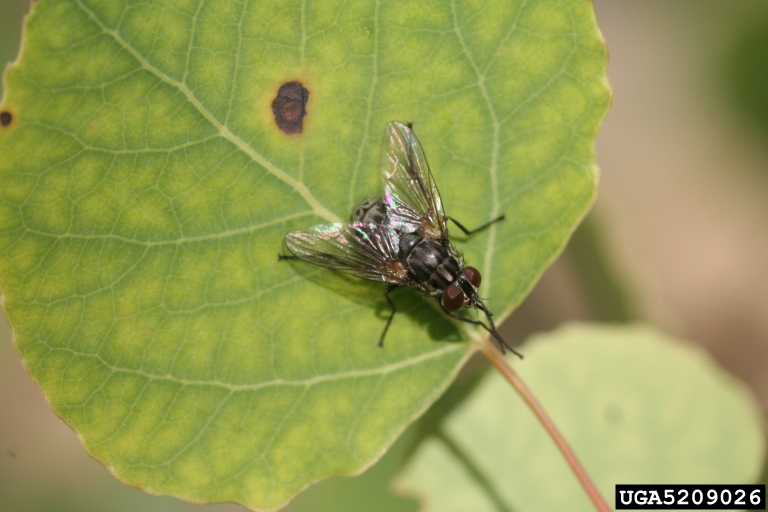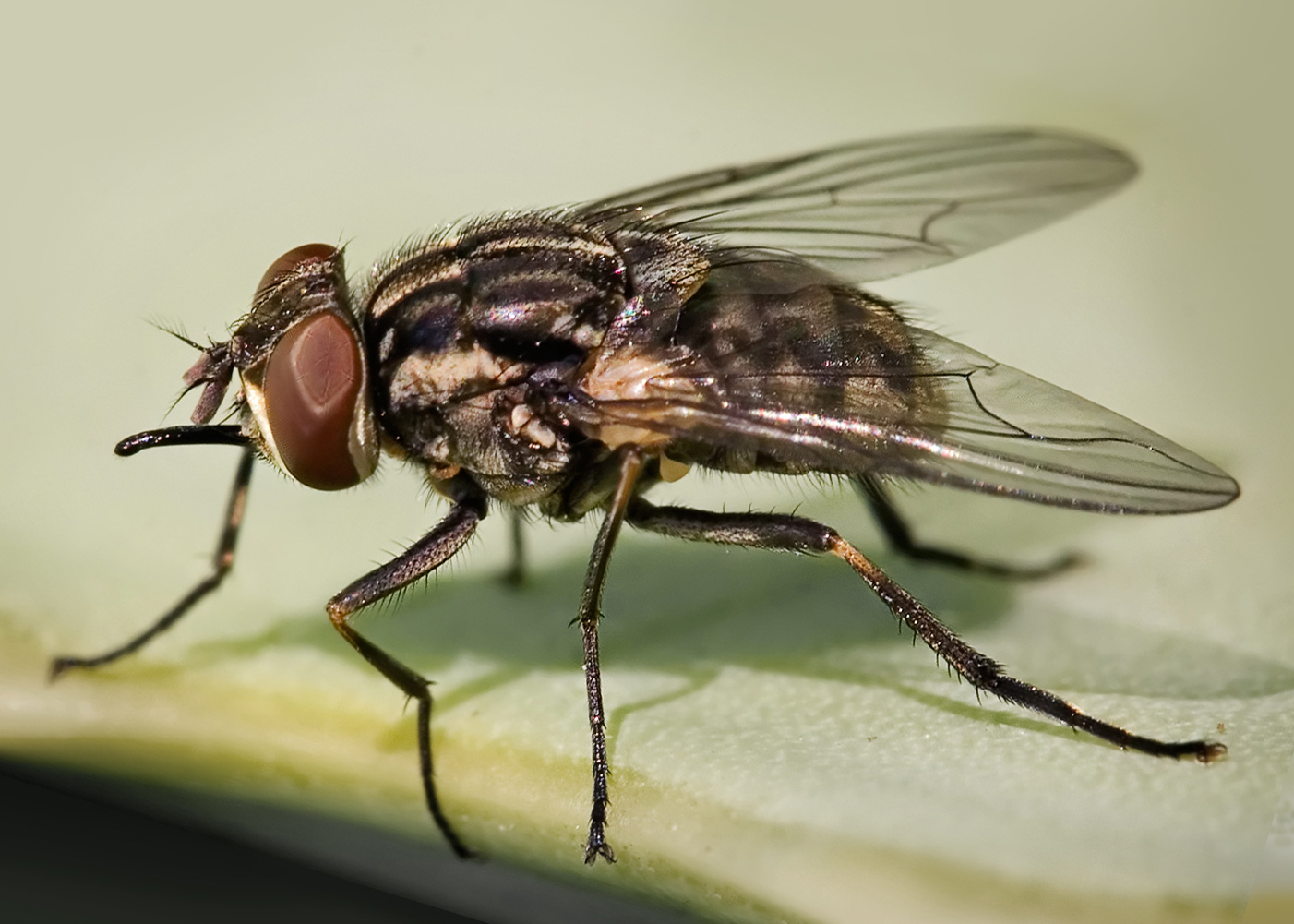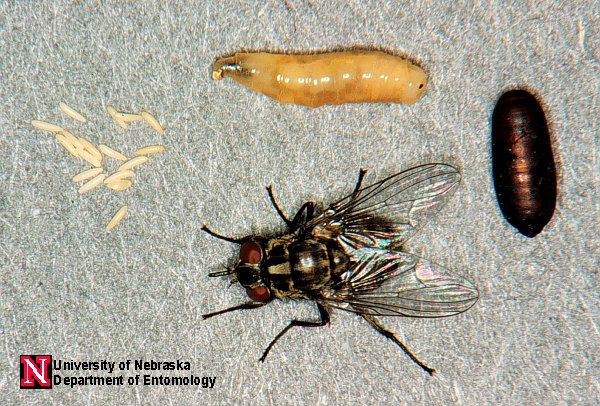Stable Fly
Stomoxys calcitrans
Identification
- 1/4 inch; gray
- four dark stripes on top of thorax (similar to house fly)
- mouth parts are long and straw-like for blood feeding
Nesting Habits
- eggs may be laid on moist straw or decaying organic matter such as hay and grass clippings and chicken manure
Diet
- larvae feed mostly on animal carcasses, garbage, and decaying organic material
Significance
- can inflict painful bites
- nuisance inside buildings; enter buildings from outside
- can spread disease through contact
IPM Recommendations
- Keep exterior doors closed, install screen doors, or install an automatic door closer, especially on doors leading into the kitchen.
- Keep screens in good repair.
- Improve sanitation.
- Keep dumpsters at least 50 feet from the building.
- Locate breeding susbstrate, if possible, and remove.
- Keep trash cans, dumpsters and garbage areas clean and free of odor.
- Close lids on dumpsters and garbage cans.
- Exclude fly entry via caulking, weather stripping, door sweeps, screens, etc.
- Properly place light traps to catch flies that come indoors.
- Use a fly swatter.
- If animals are raised on school-adjacent properties, consider discussing control options with owner.




